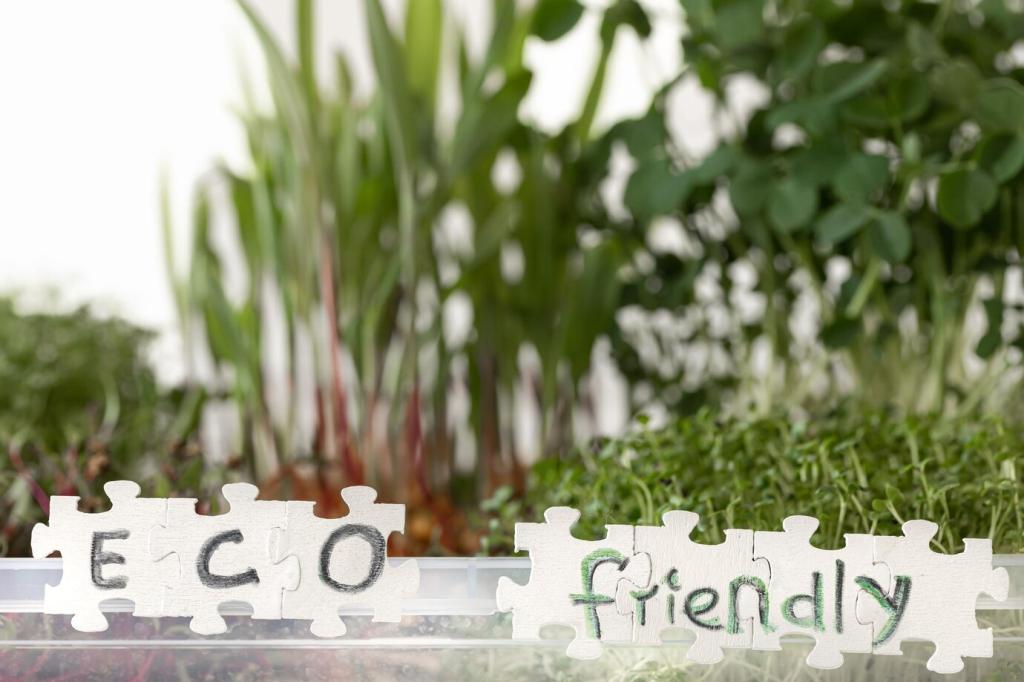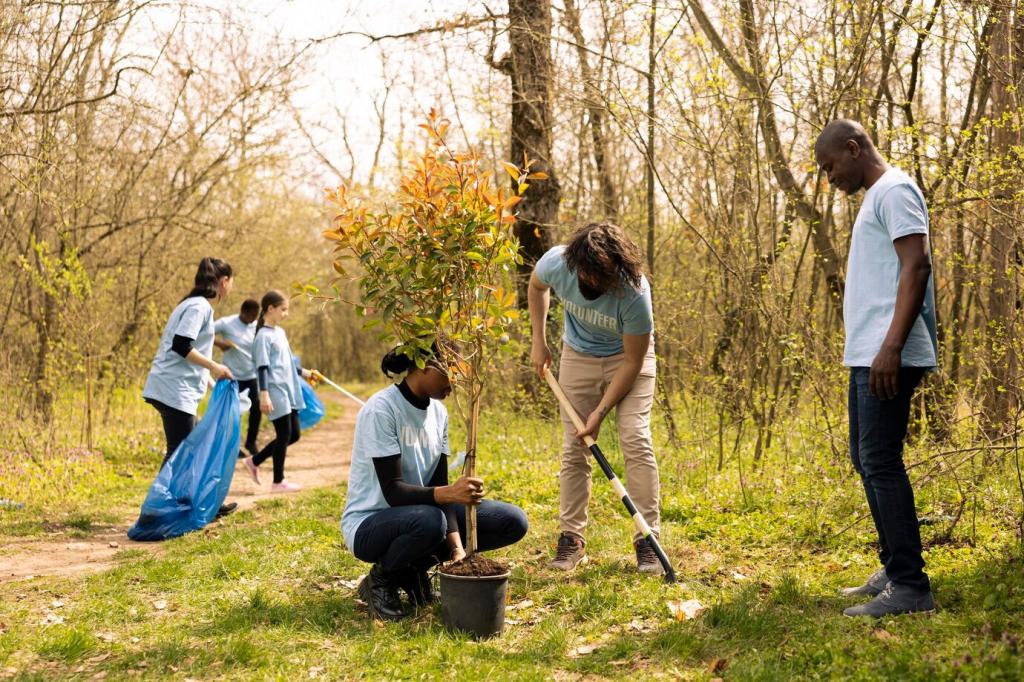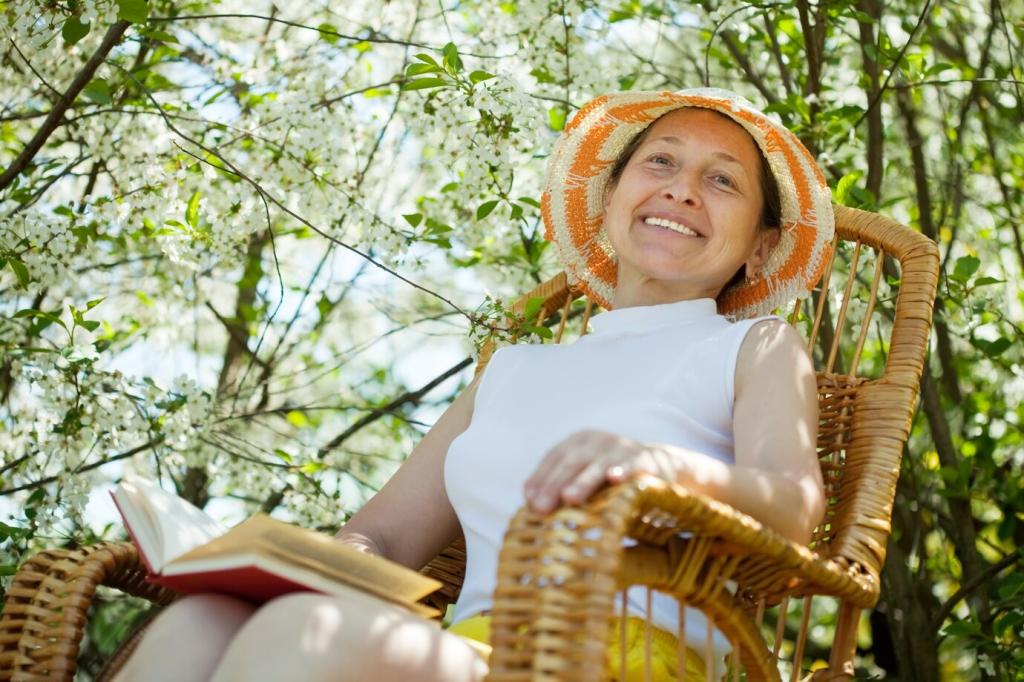City Futures: Innovative Approaches to Sustainable Urban Living
The 15-Minute City in Practice
Compact blocks with ground-floor shops, mid-rise housing, and flexible work nooks bring everyday needs closer, cutting trips and costs. When lighting, trees, and street seating are thoughtfully placed, sidewalks become social rooms, encouraging people to linger, chat, and support local businesses naturally.


The 15-Minute City in Practice
In one neighborhood, a single parking lane transformed into a micro-park with planters, benches, and a tiny play corner. Within weeks, a bakery extended morning coffee seating, parents paused on school runs, and a book-swap shelf appeared—proof that small tactical changes can spark lasting community habits.

Passive-First Strategies
Start with insulation, airtightness, and high-performance windows; reduce demand before adding technology. Shading from trees or external blinds keeps summer heat out, while proper ventilation preserves indoor air quality. Residents often report quieter rooms, steadier temperatures, and lower bills—comfort gains that make sustainability feel immediately personal.
Electrification and Shared Renewables
Heat pumps, induction stoves, and efficient water heaters replace combustion at home, improving air quality. Pair them with rooftop solar, shared community arrays, or building-level batteries to cut reliance on fossil fuels. Neighbors who coordinate installations often secure better pricing and learn maintenance skills together, strengthening local resilience.
Financing That Includes Everyone
On-bill financing, green leases, and co-op ownership models help renters and owners share benefits fairly. Layer rebates with low-interest loans and workforce programs to grow local jobs. If your block negotiated a group deal, share your template—your experience can guide others through the maze of incentives and approvals.
Nature-Based Urban Design
Permeable paving, tree trenches, and curbside rain gardens slow runoff and reduce flooding during heavy storms. A single block upgrade can reveal birdsong after rain and fewer puddles at crossings. Residents often volunteer to water new plantings—small care rituals that turn infrastructure into shared neighborhood pride.
Green roofs add habitat for pollinators, insulate buildings, and lower urban heat. Even modest plantings moderate rooftop temperatures and extend membrane life. Some buildings schedule seasonal rooftop days, where neighbors learn pruning, swap herbs, and track temperatures together, building knowledge and friendships alongside thriving vegetation.
Continuous ribbons of native plants along sidewalks, rail lines, and rivers let wildlife move safely through the city. Wayfinding signs can double as mini field guides, inviting passersby to notice flowering times and migrating birds. Share a corridor idea on your block, and we’ll feature standout proposals in our newsletter.



Circular City: Turning Waste into Value
Tool libraries, seed exchanges, and repair meetups teach practical skills while building trust. People bring a wobbly chair, leave with a fixed seat and a new friend. Over time, these gatherings reframe value—not as shiny and new, but as cared for, competent, and connected to community memory.


Circular City: Turning Waste into Value
Renovations can salvage doors, bricks, and fixtures, while digital material passports track what can be reused later. Warehouses of reclaimed parts support affordable projects. If your block deconstructed a garage or shed, tell us what you saved and how it found a second life in your neighborhood.
Digital Twins, Data, and Participation
Neighborhood dashboards that show shade, noise, and transit frequency help residents choose routes, plant trees, or request benches where needed. When metrics are simple and trustworthy, meetings focus less on arguing and more on acting, turning data into shared confidence rather than confusing spreadsheets.


Digital Twins, Data, and Participation
Digital twins let communities test ideas—new bus lanes, tree canopies, or flood defenses—before construction. People can see trade-offs and adjust designs together. One workshop ended with a teenager suggesting a safer crossing; the model proved it worked, and the city installed it within months.
